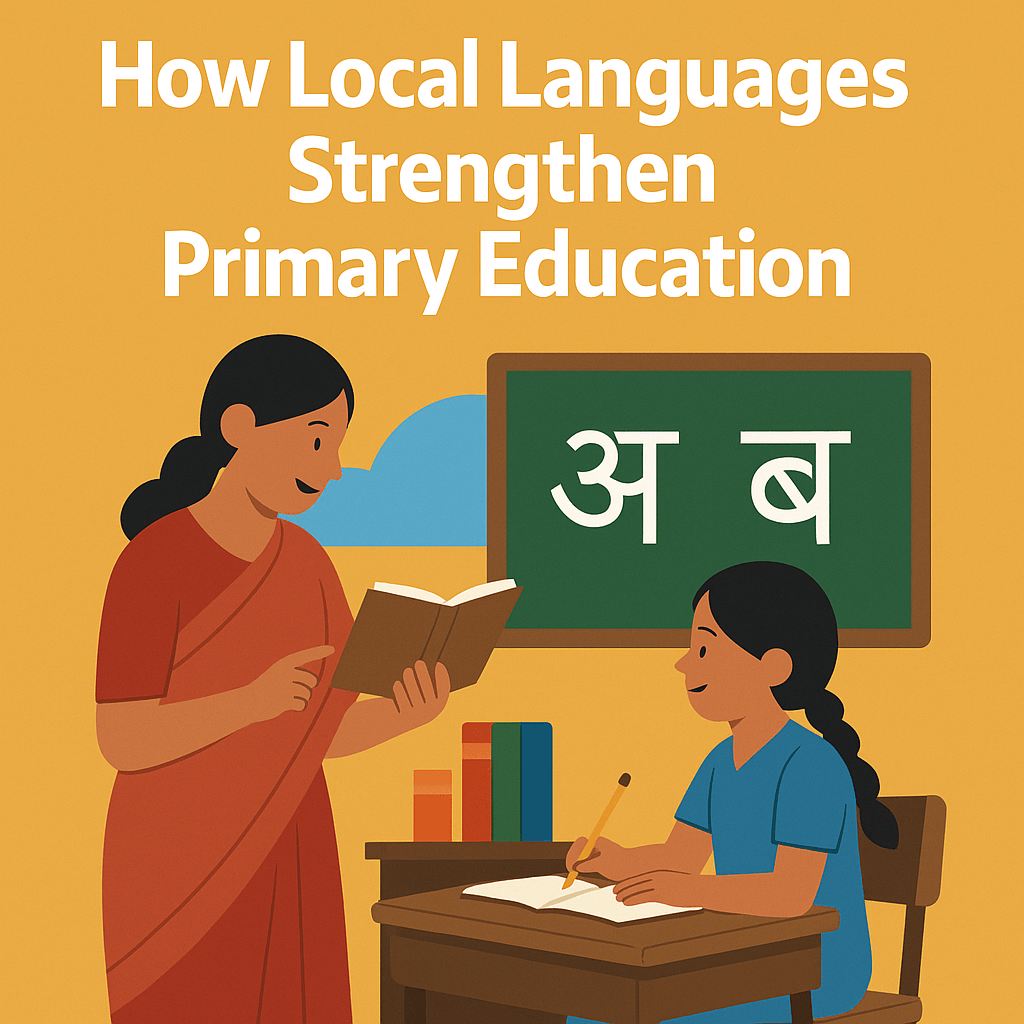How Local Languages Strengthen Primary Education in India
Why Learning in the Mother Tongue Matters
Studies worldwide show that children learn best when taught in their first language, especially in the early years. Here’s why:
- Better comprehension: Concepts make more sense in the language spoken at home.
- Confidence building: Children participate more actively when they’re comfortable with the language.
- Stronger foundation: It becomes easier to pick up second languages (like Hindi or English) later.
- Lower dropout rates: School becomes a welcoming place rather than a confusing one.
In India, where over 19,500 languages and dialects are spoken (Census 2011), this becomes even more crucial.
The Impact of Local Language Education
When primary education embraces local languages, it brings measurable benefits:
- Higher literacy rates: Children grasp reading and writing faster.
- Improved math and science understanding: Core concepts are easier when explained in familiar words.
- Cultural preservation: Kids feel proud of their identity and roots.
- Parental involvement: Parents who may not know Hindi or English can still help with studies.
A UNESCO report highlights that children who start learning in their mother tongue are more likely to succeed academically and complete school.
Success Stories from Across India

- In Odisha, primary schools using Odia or tribal languages have seen better attendance and lower dropout rates.
- In Maharashtra, introducing textbooks in Marathi for tribal children has improved test scores.
- NGOs working in Uttar Pradesh and Bihar have noted that teaching in Bhojpuri or Maithili bridges gaps quickly for first-generation learners.
How Your Support Helps
At Shail-Satya Foundation, we actively promote mother tongue education. From developing learning materials in local dialects to training teachers, we aim to ensure no child feels left out in class due to language barriers.
- We conduct community sessions that encourage parents to support learning at home in their native language.
- We distribute storybooks in local languages to make reading fun.
- We train local youth as educators, so children learn from someone who speaks just like them.
The Way Forward
India’s National Education Policy (NEP) 2020 recommends using the mother tongue or local language as the medium of instruction at least up to Grade 5, and preferably till Grade 8. This is a strong step towards inclusive, effective education.
But policies need community backing. With your support, we can reach more villages, create more local language content, and train more teachers.
Join Us in Building a Future Without Language Barriers
Join us in building a future where every child learns joyfully in the language they understand best.




Leave a Reply
You must be logged in to post a comment.